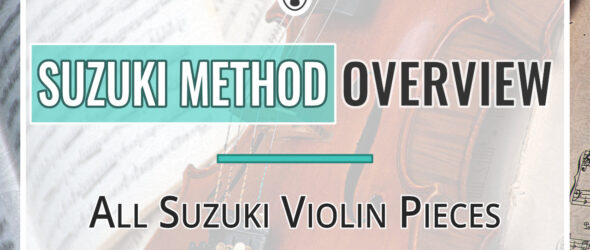
An overview of violin pieces in the Suzuki Violin Method
Have you heard of the Suzuki violin method? It’s a very famous series of music books that violin teachers all over the world use for students of many ages.
If you’ve ever wondered what these books cover, you’re in luck! Today I’m sharing a list of all the violin pieces included in the series, along with techniques and concepts covered within each book. If you’ve been wanting to work out of these books but didn’t know which one to start with, this article will be very helpful for you.
Even if you don’t have any prior experience, check out the list anyway to see what you might learn later on. You could even make a playlist of all the pieces to start to familiarize yourself with them!
Without further adieu, let’s dive into the violin pieces of the Suzuki method.
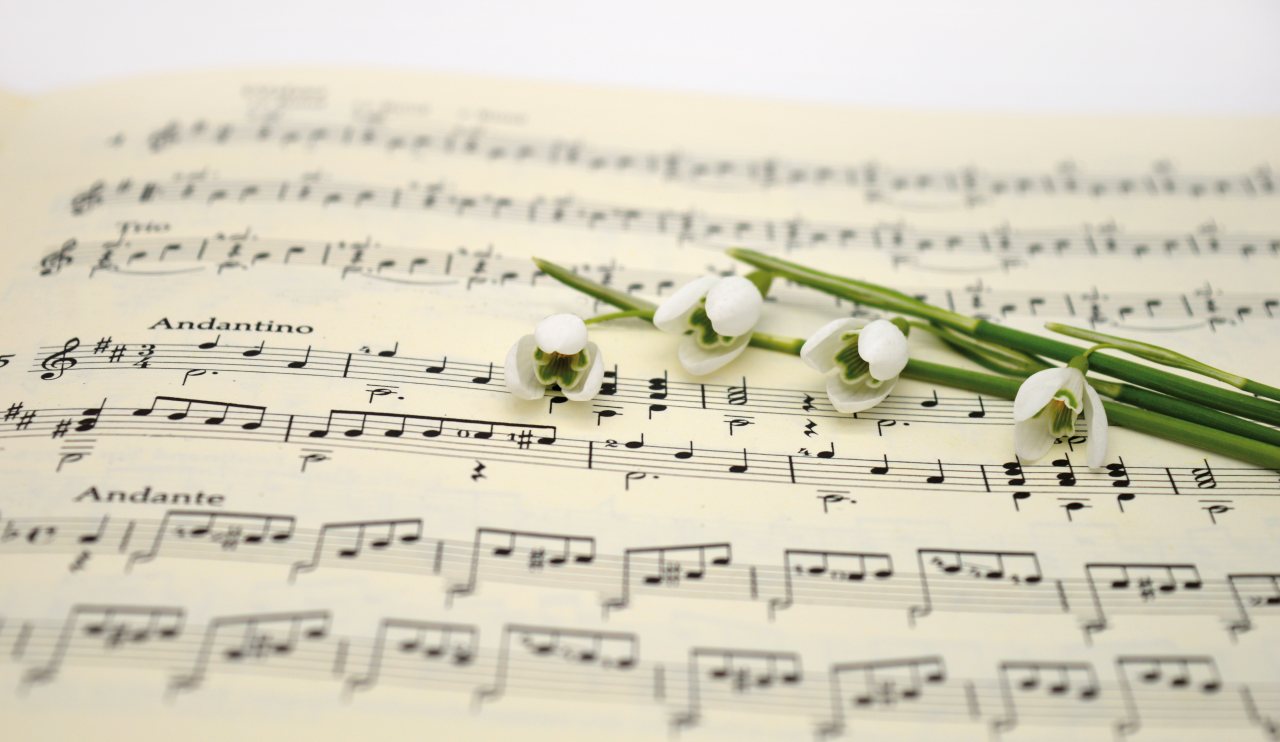
An Overview of the Suzuki Violin Method
If you haven’t heard of the Suzuki method before, that’s okay! This is a book series and teaching style that focuses on teaching music as a language to very young students, exposing them to as much music as possible so that they understand it innately. The method was originally created for violin, but now there are corresponding books for many different instruments.
Although the Suzuki method was created with young children in mind, the books are very valuable for violin players of all levels and ages. The music within is a great mix of folk tunes, classical favorites, and violin repertoire, and the progression of techniques is well thought out.
Today we’re focusing on the violin pieces and the concepts covered within each book. If you’d like more background on the Suzuki method and its creator Shinichi Suzuki, check out All Your Suzuki Questions Answered before reading on!
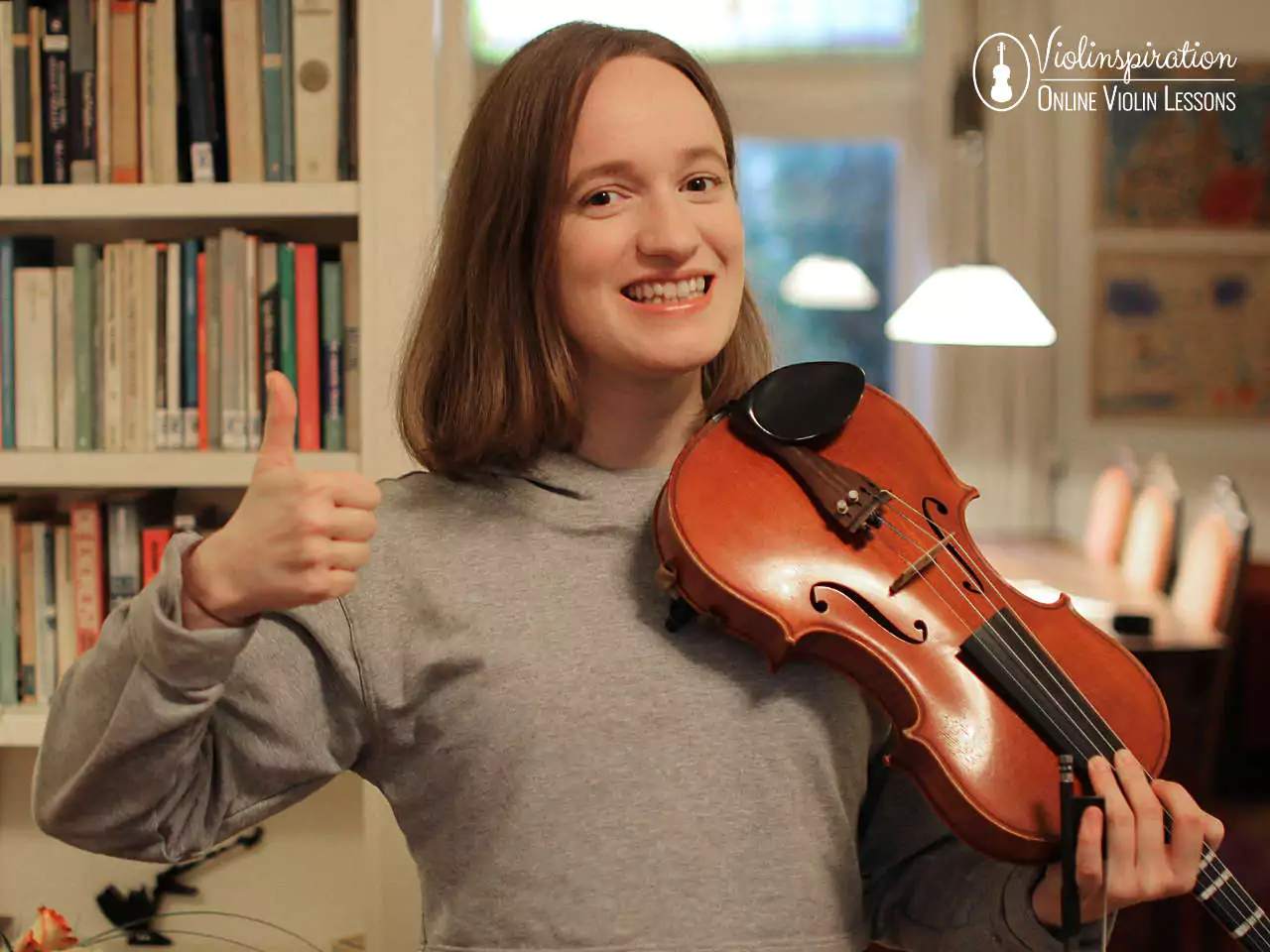
Suzuki Violin School Volume 1 Violin Pieces
The first Suzuki book covers the basics of playing. How to hold the violin and bow, basic finger patterns, and standard bow strokes like legato, staccato, and hooked bowings are introduced.
If you’re completely new to music and don’t know how to read treble clef, you’ll want to research that before diving into this book, especially if you’re learning on your own. Having a basic understanding of music notation will help you feel more confident playing the songs; although there are finger numbers, or tabs, written above almost every single note in the first book.
List of violin pieces in order:
- Twinkle Twinkle Little Star Variations (Suzuki)
- Lightly Row (Folk Song)
- Song of the Wind (Folk Song)
- Go Tell Aunt Rhody (Folk Song)
- O Come, Little Children (Folk Song)
- May Song (Folk Song)
- Long, Long Ago (Bayly)
- Allegro (Suzuki)
- Perpetual Motion (Suzuki)
- Allegretto (Suzuki)
- Andantino (Suzuki)
- Etude (Suzuki)
- Minuet I: Minuet III from Suite in G Minor for Klavier, BWV 822 (J.S. Bach)
- Minuet II: Minuet from Notebook for Anna Magdalena Bach (J.S. Bach)
- Minuet III: Minuet from BWV Anh. II 11/Anh. III 183 (J.S. Bach)
- The Happy Farmer from Album for the Young (Schumann)
- Gavotte (Gossec)
As you can see, the first book covers the basics and is made up of mostly folk songs, Suzuki originals, and a few Bach pieces. If you’re a complete beginner or haven’t had much experience yet, this book is a great place to start!
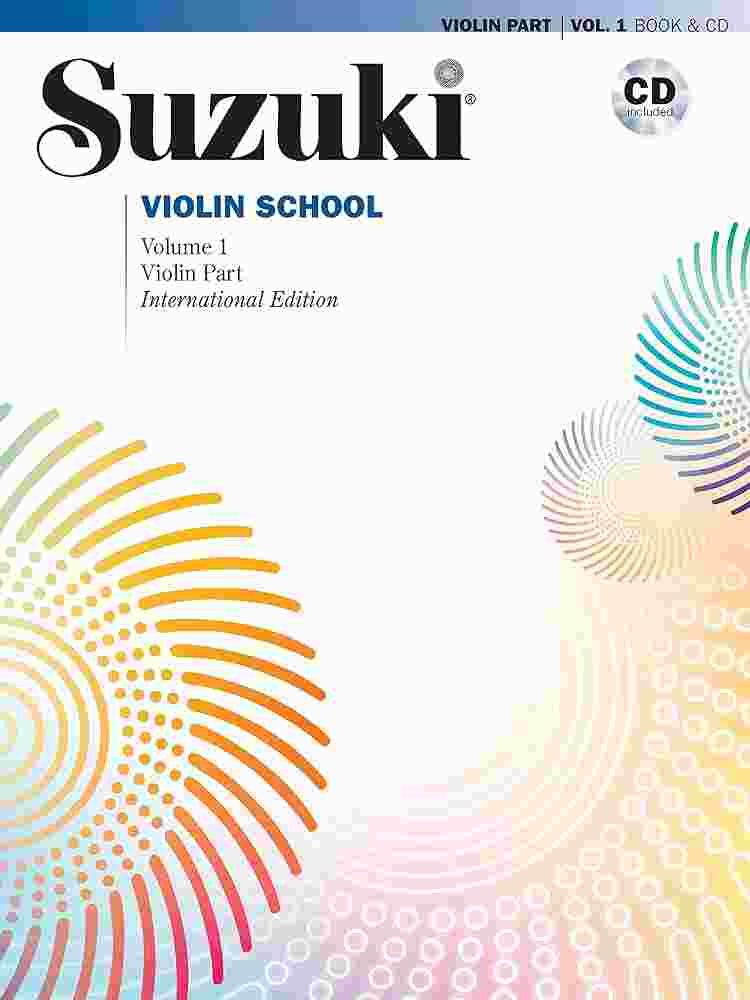
Suzuki Violin School Method Book, Volume 1
Support us for more FREE content No extra costs for you Recommended by Violinists

Suzuki Violin School Volume 2 Violin Pieces
The second violin book teaches more left hand finger patterns, like low first finger, low second finger, and extended fourth finger. New bowing techniques in this book include more hooked bows, up bow staccato, and faster string crossings.
List of violin pieces in order:
- Chorus from Judas Maccabaeus (Handel)
- Musette from English Suite III in G Minor for Klavier, BWV 808 (J.S. Bach)
- Hunter’s Chorus from Act III of Der Freischutz (C.M. Von Weber)
- Long, Long Ago (Theme and Variation) (Bayly)
- Waltz, Op. 39. No. 15 for Piano (Brahms)
- Bourrée from Sonata in F Major for Oboe (Handel)
- The Two Grenadiers, Op. 29 No. 1 (Schumann)
- Theme from Witches’ Dance (Paganini)
- Gavotte from Mignon (A. Thomas)
- Gavotte (Lully)
- Minuet in G, Wo0 10, No. 2 (Beethoven)
- Minuet from Sei Quintetti per Archi No. 11, Op. 11, No. 5 in E Major (Boccherini)
If you’re a beginner looking for more of a challenge, you’ll want to look into the second book. The pieces within take a bit of practice to master, but they’re still fun and attainable!
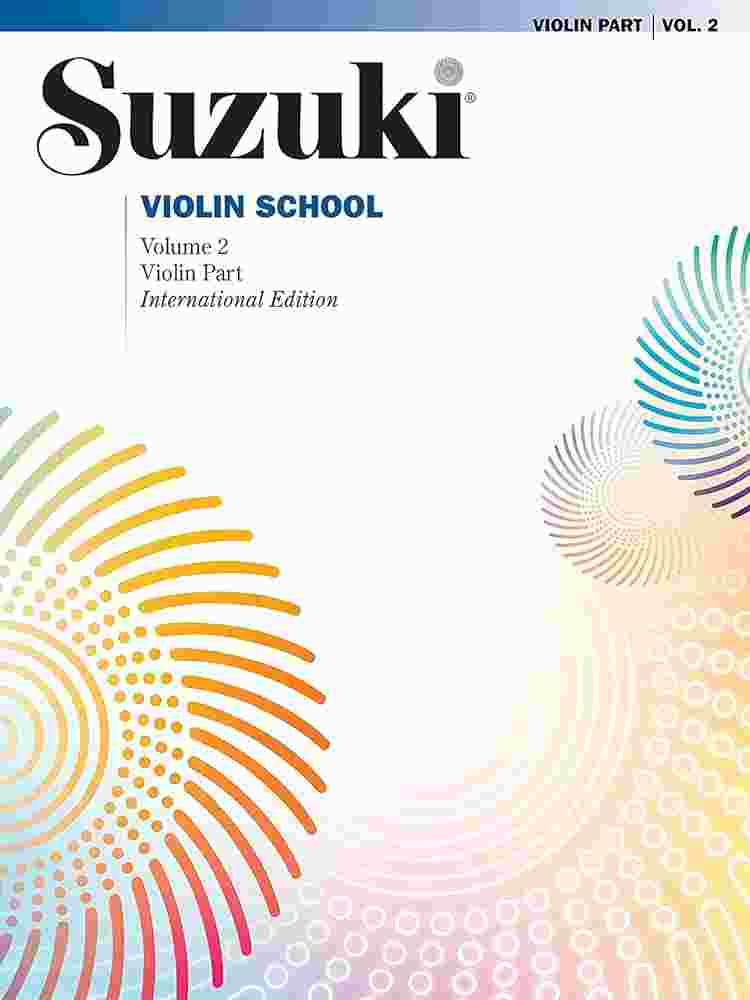
Suzuki Violin School Method Book, Volume 2
Support us for more FREE content No extra costs for you Recommended by Violinists

Suzuki Violin Book 3 Violin Pieces
Ironically, the third Suzuki book teaches third position! Learning this pivotal technique will open the doors to so many more exciting pieces and tons of violin repertoire. There’s also an emphasis on wider finger patterns, such as playing low first finger to high 2nd finger. You’ll start playing double stops, and there are even vibrato exercises.
List of violin pieces in order:
- Gavotte (Martini)
- Minuet (J.S. Bach/Petzold)
- Gavotte in G Minor (J.S. Bach)
- Humoresque (Dvorak)
- Gavotte (J. Becker)
- Gavotte in D Major (J.S. Bach)
- Bourrée (J.S. Bach)
The third book is great for budding intermediate-level violinists. If you’re ready to start learning third position and vibrato, I suggest working through this book!
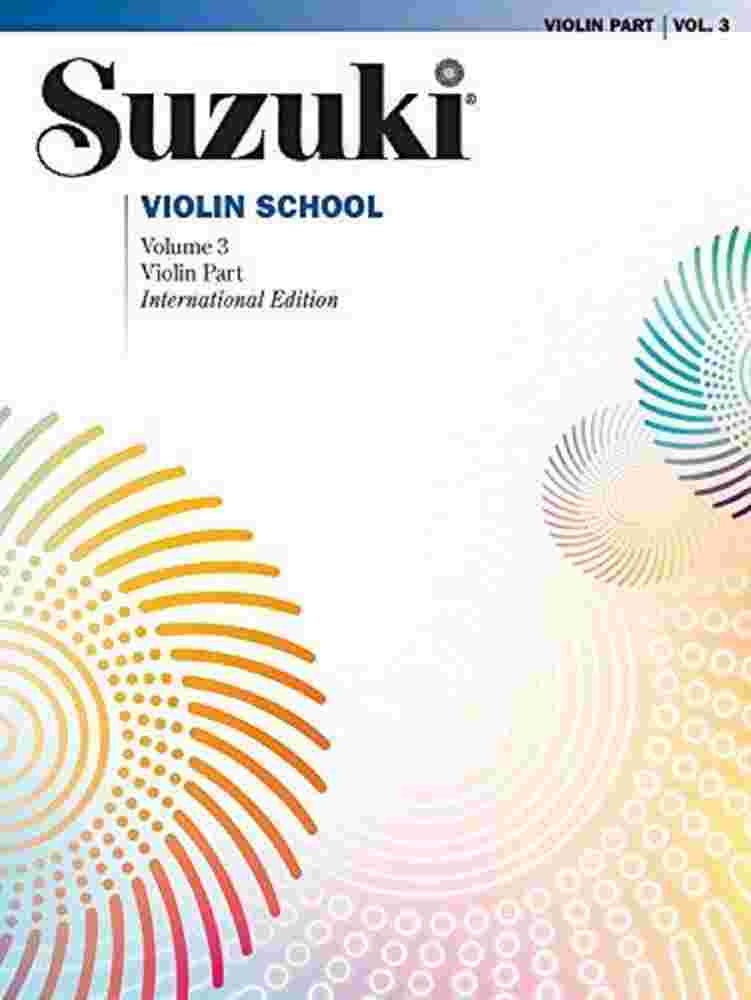
Suzuki Violin School Method Book, Volume 3
Support us for more FREE content No extra costs for you Recommended by Violinists

Suzuki Book 4 Violin Pieces
More shifting abounds in Book 4: second and fourth positions are used in the Vivaldi concerto, along with continuing to strengthen third position skills in most pieces. This is when you’ll learn your first concerto if you’re learning purely from the Suzuki Violin School books.
List of pieces in Suzuki book 4 violin in order:
- Lullaby (Schubert)
- Lullaby (Brahms)
- Concerto No. 2 in G Major, 1st Movement, Op. 22 (Seitz)
- Concerto No. 5 in D Major, 1st Movement, Op. 22 (Seitz)
- Concerto No. 5 in D Major, 3rd Movement Op. 22 (Seitz)
- Concerto in A Minor, 1st Movement, Op. 3, No. 6 (Vivaldi/Nachez)
- Concerto in A Minor, 3rd Movement, Op. 3, No. 6 (Vivaldi/Nachez)
- Perpetual Motion, “Little Suite No. 6” (Bohm)
- Concerto for Two Violins in D Minor, 1st Movement, 2nd violin part, BWV 1043 (J.S. Bach)
If you’re hoping to develop better vibrato, practice more double stops, and perhaps learn positions other than third position, Suzuki Violin Book 4 should be a great fit for you! The violin pieces in this book are exciting, and you’ll feel so proud when you complete them.
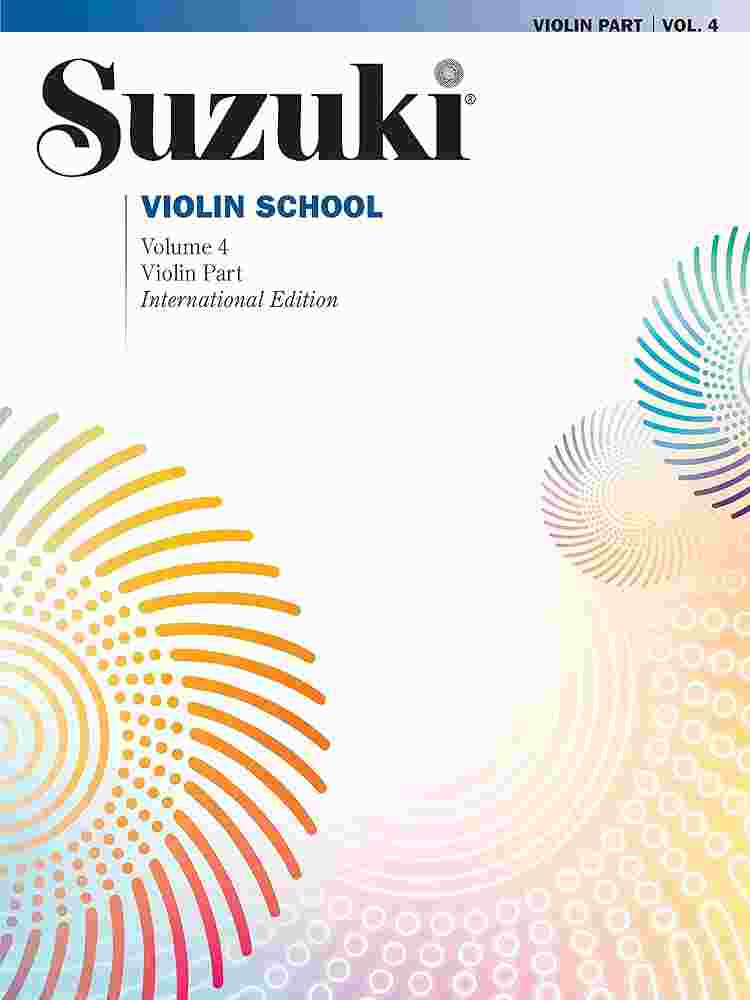
Suzuki Violin School Method Book, Volume 4
Support us for more FREE content No extra costs for you Recommended by Violinists

Suzuki Method Book 5 Violin Pieces
Suzuki Book 5 teaches fifth position and will help you strengthen your second and third position skills as well. You’ll also work on the 3-octave G Major and G minor scales, along with their arpeggios, giving you a better understanding of the violin fingerboard. You’ll also get practice with bowing techniques like spiccato and collé, two difficult bow strokes that will allow you to play with better artistry!
List of violin pieces Suzuki book 5 in order:
- Gavotte (J.S. Bach)
- Concerto in A Minor, 2nd Movement, Op. 3, No. 6 (Vivaldi)
- Concerto in G Minor (Vivaldi)
- Country Dance (C.M. Von Weber)
- German Dance (Dittersdorf)
- Gigue (Veracini)
- Concerto for Two Violins in D Minor, 1st Movement, 1st violin part, BWV 1043 (J.S. Bach)
The violin pieces in Book 5 are certainly an intermediate level, but they’re so fun to play! I’d recommend checking this book out if you’re already fairly comfortable in 2nd, 3rd, and 4th positions, and would like to reach even higher heights.
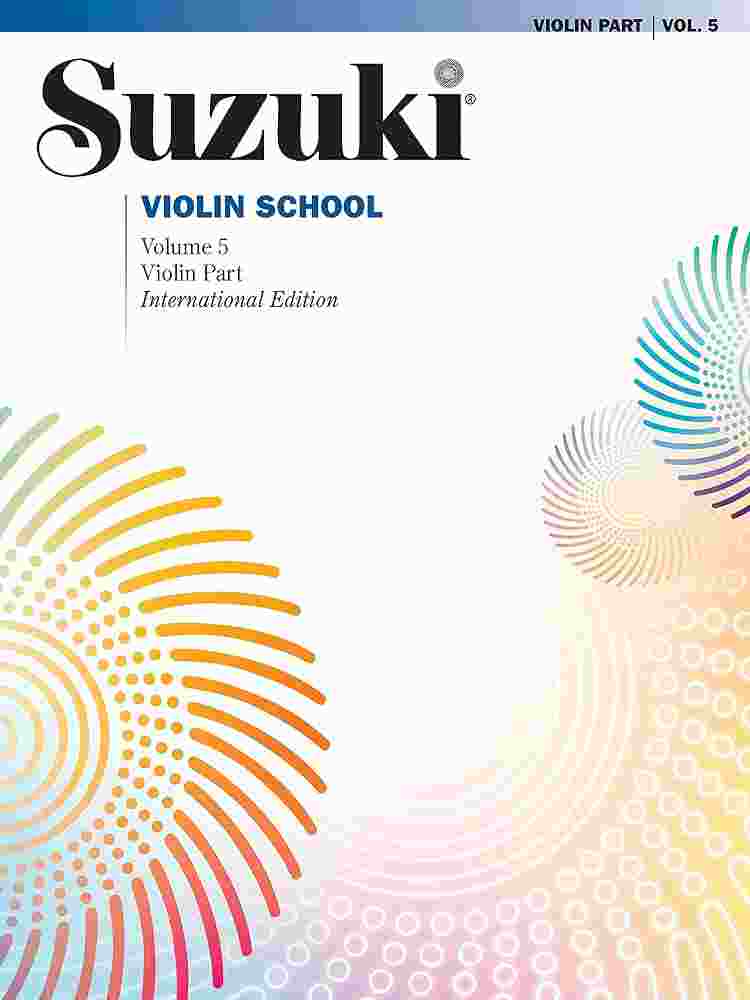
Suzuki Violin School Method Book, Volume 5
Support us for more FREE content No extra costs for you Recommended by Violinists

Suzuki Violin School Volume 6 Violin Pieces
Ready to shift even higher? Book 6 will teach you sixth and seventh positions. You’ll find upper-level intermediate pieces with faster notes, more shifting, and a variety of chances to practice phrasing.
List of violin pieces in Suzuki Book 5:
- La Folia (Corelli/Suzuki)
- Sonata No. 3 in F Major, HWV 370 (Handel)
- Allegro (Fiocco)
- Gavotte (Rameau)
- Sonata No. 4 in D Major, HWV 371 (Handel)
This book is for a higher intermediate student. If you’re ready to expand your shifting positions past 5th position and shift more often, this will be a great book for you!
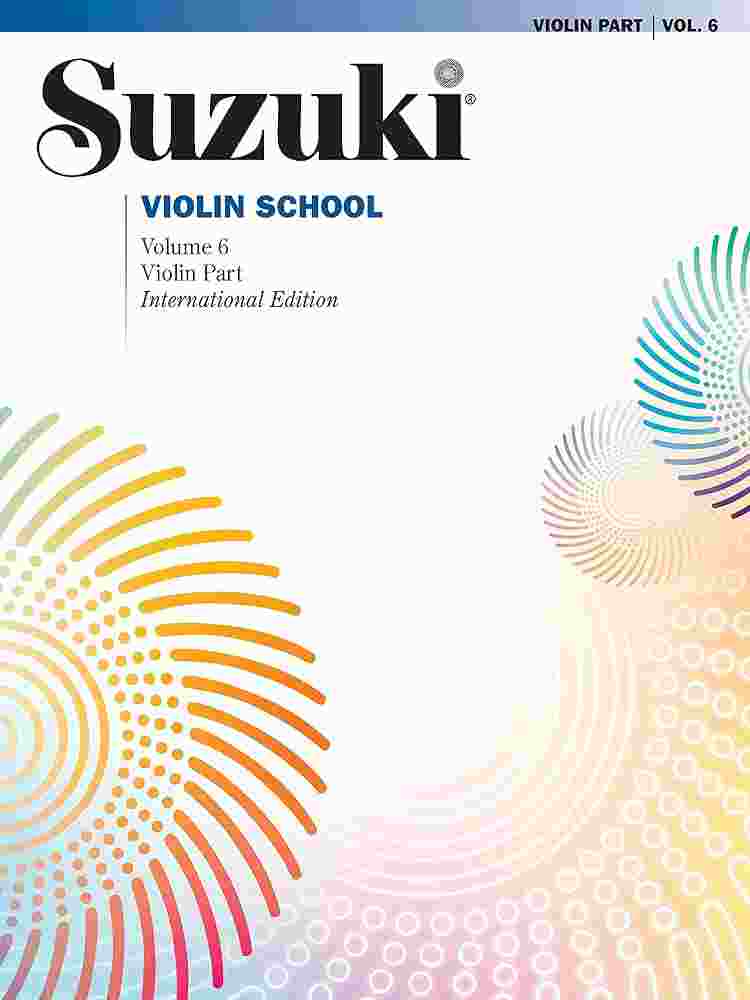
Suzuki Violin School Method Book, Volume 6
Support us for more FREE content No extra costs for you Recommended by Violinists

Suzuki Violin School Volume 7 Violin Pieces
Coincidentally, Suzuki Volume 7 teaches 7th position! You’ll also work on the three octave A Major and A minor scales and arpeggios, plus the three octave C Major scale, arpeggios, and the one octave C Major double stop scale.
Violin pieces in Suzuki Violin School Volume 7:
- Minuet (Mozart)
- Courante (Corelli)
- Sonata in A Major, HWV 361 (Handel)
- Concerto in A Minor, BWV 1041 (J.S. Bach)
- Gigue (J.S. Bach)
- Courante (J.S. Bach)
- Allegro (Corelli)
The techniques and pieces taught in Book 7 will help you feel confident through the majority of the fingerboard, and the double stop scale will aid in perfecting your intonation. This volume is a great start to working on advanced violin music!
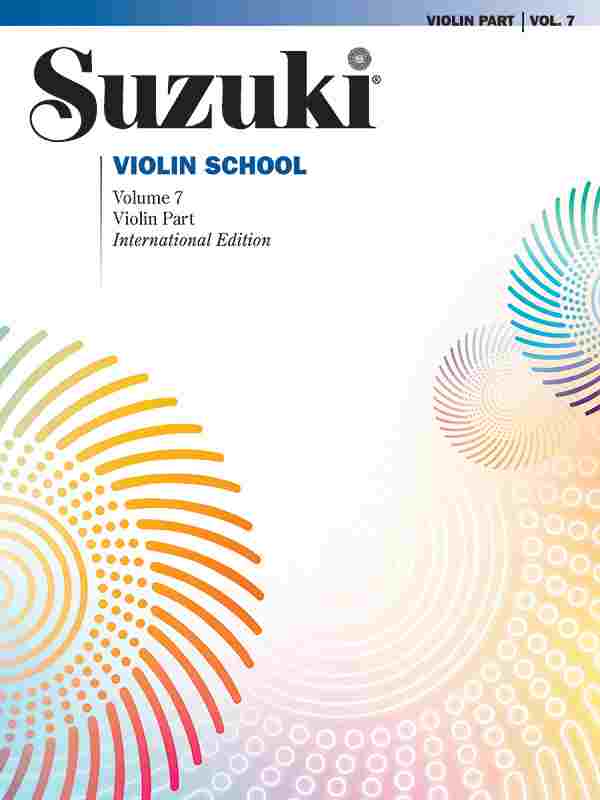
Suzuki Violin School Method Book, Volume 7
Support us for more FREE content No extra costs for you Recommended by Violinists

Suzuki Violin Book 8 Violin Pieces
In the eighth volume, you’ll learn the three octave D Major, E Major, and E melodic minor scales and arpeggios. You’ll also practice the D Major scale in double stops, and there’s an excellent trill exercise included as well.
List of violin pieces in Volume 8:
- Sonata No. 11 in G Minor (Eccles/Suzuki)
- Tambourin (Grétry)
- Largo from Sonata No. 3 in C Major, BWV 1005 (J.S. Bach)
- Preludio from Sonata in E Minor, BWV 1023 (J.S. Bach)
- Largo Espressivo (Pugnani/Moffat)
- Sonata in E Minor (Veracini/David/Suzuki)
Suzuki Violin School Volume 8 covers some very important three-octave scales, and the pieces in this edition are both fantastic learning pieces, and they’re interesting to listen to. This is the final book before focusing completely on concertos, so if you’ve studied the first seven books, I don’t recommend skipping over this one. There are so many important things for you to learn in this book!
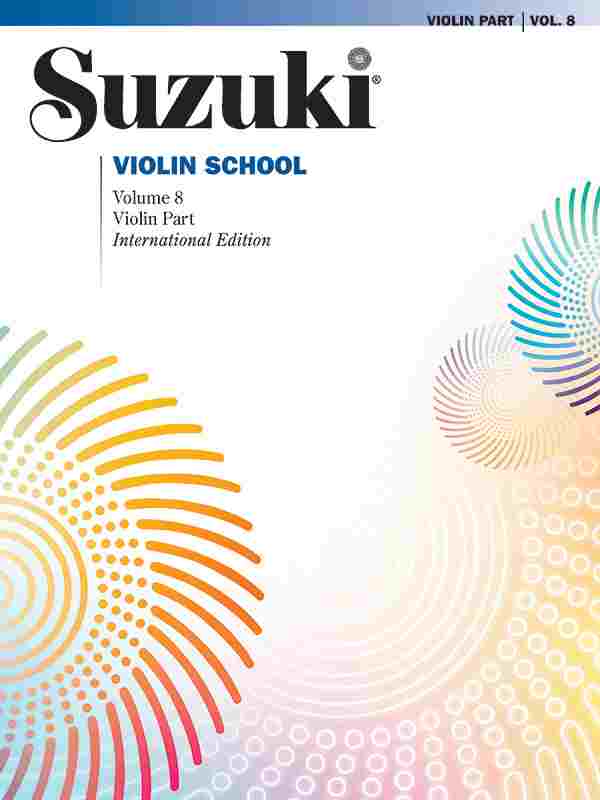
Suzuki Violin School Method Book, Volume 8
Support us for more FREE content No extra costs for you Recommended by Violinists

Suzuki Violin Method Volume 9
There’s only one piece covered in this volume: Mozart’s Violin Concerto in A Major, K. 219, arranged by Joachim and Shinichi Suzuki.
If you’re ready to start learning this concerto, it could be helpful to work out of the Suzuki version, as they’ll break down concepts and provide helpful fingerings and explanations that aren’t available in other editions of the concerto.
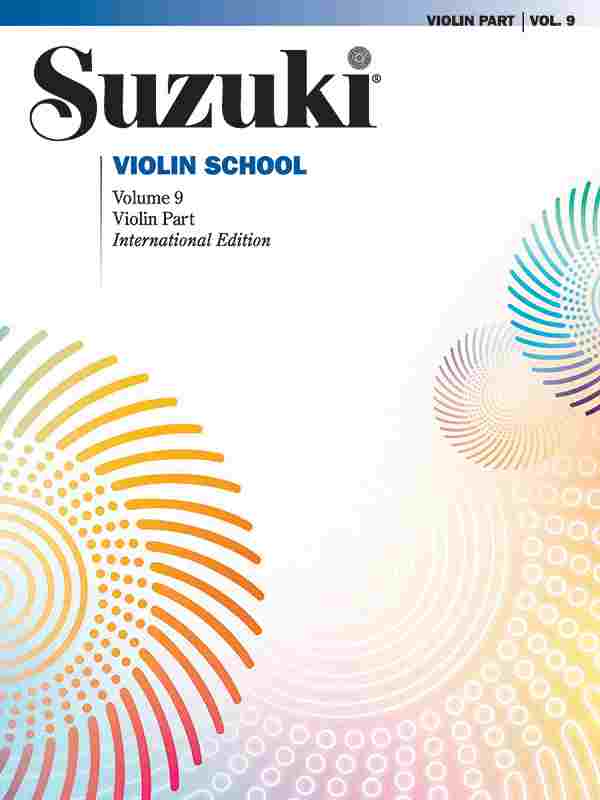
Suzuki Violin School Method Book, Volume 9
Support us for more FREE content No extra costs for you Recommended by Violinists
Suzuki Violin School Volume 10
The final Suzuki book also only covers one piece of music: Mozart’s Violin Concerto in D Major, K/ 218, arranged by Joachim and Suzuki.
Again, it could be helpful to use the Suzuki edition to learn the concerto for the additional tips it provides, rather than a standard sheet music edition.
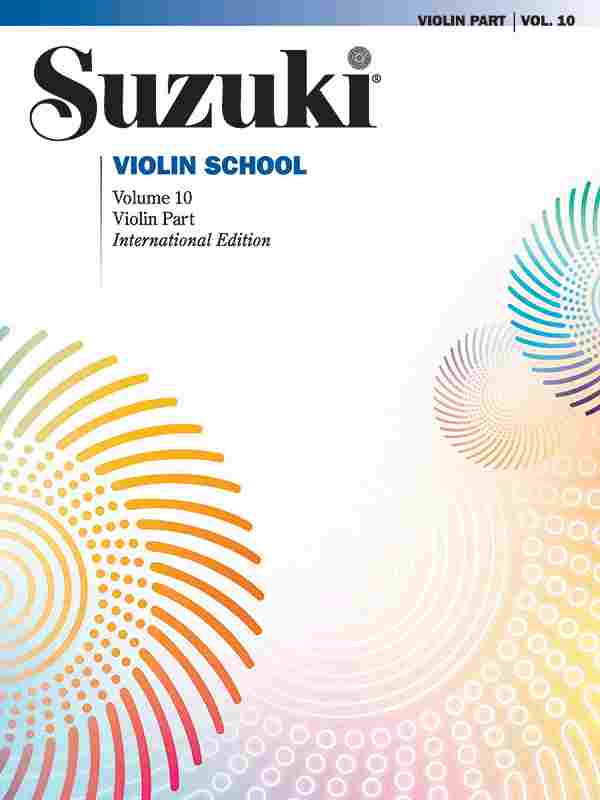
Suzuki Violin School Method Book, Volume 10
Support us for more FREE content No extra costs for you Recommended by Violinists
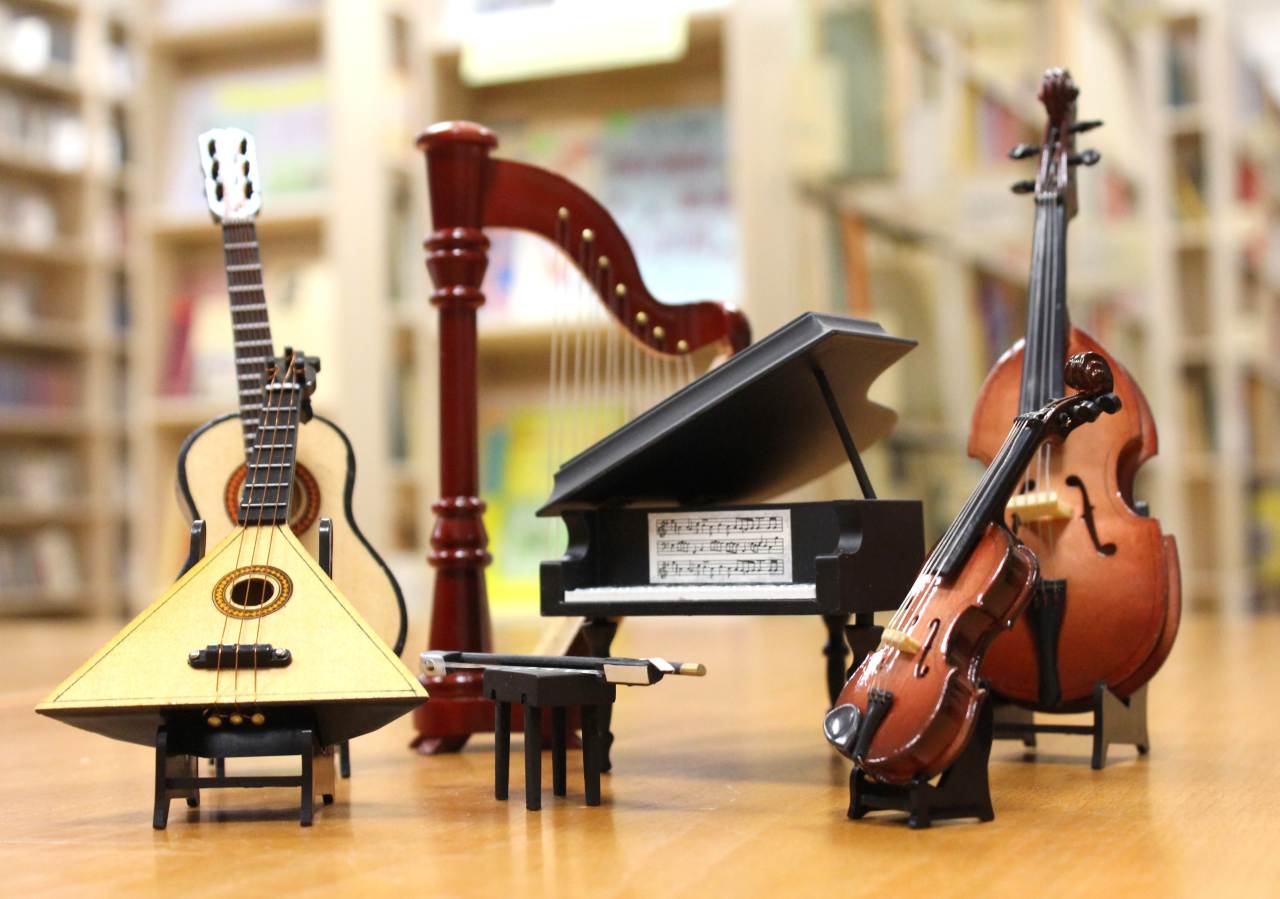
Learn More
As I’m sure you’ve noticed, the Suzuki method covered a huge range of pieces and techniques throughout just ten books. Going from nothing to two Mozart Violin Concertos is a lengthy process, which can take a lot of time. No matter where you are in your journey, these books are so helpful to solidify techniques and learn classical music.
If you’d like to learn more about violin repertoire, I suggest reading The 10 Most Famous Violin Classical Pieces. If you’re wondering how long it might take you to work through the Suzuki books, check out How Long Does it Take to Learn Violin. Enjoy your reading!























